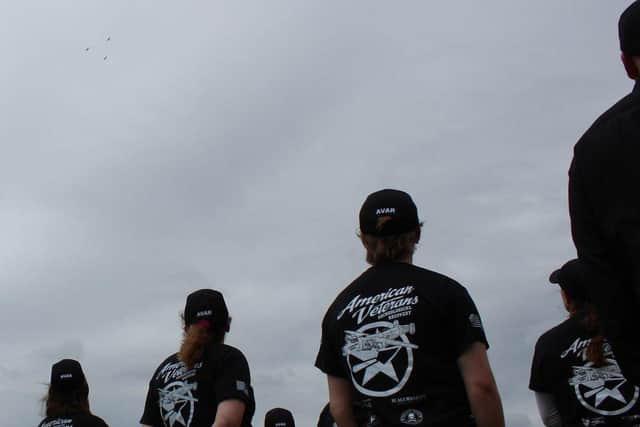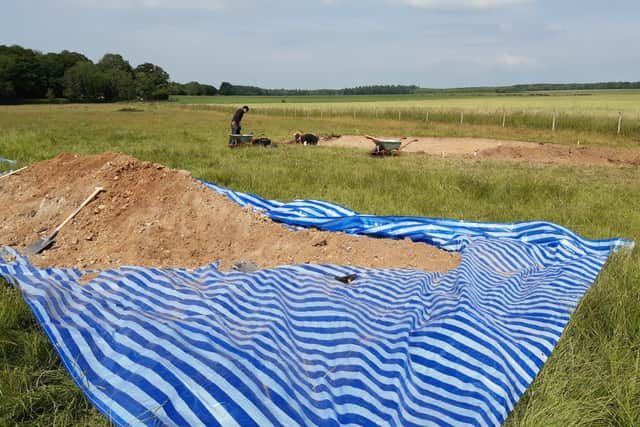The Arundel Bomber: Work begins to recover remains of American B-24 Liberator aircrew
and live on Freeview channel 276
American Veterans Archaeological Recovery, working with the American Defense POW/MIA Accounting Agency, the University of York and the local community, is carrying out the veterans archaeological excavation at Park Farm over four weeks.
Stephen Humphreys, chief executive of AVAR and a research fellow at the University of York, said: “The target for these excavations will be an American B-24 Liberator heavy bomber that crashed with several members of its crew still on board after bombing a target in France in 1944.
Advertisement
Hide AdAdvertisement
Hide Ad“This project is unique for several reasons. First, unlike a typical archaeology dig this excavation is aimed at recovering the remains of these service members so they can be returned to the United States.


More pictures: The Arundel Bomber: See how excavation has started at the site where a heavy bomber crashed
“Second, the excavation will be carried out by American and British military veterans, as well as British undergraduate students from the University of York.
“Our programme is tailored to benefit the mental health of our participants. We have found that as they work, they draw on an emotional connection to the site and the end mission. They do see it as extended family.”
Advertisement
Hide AdAdvertisement
Hide AdThe dig happened to coincide with the 77th anniversary of the plane crash, so the team started with a memorial service on Tuesday, June 22, including a flypast with three Spitfires to honour the missing airmen.


Excavation work started with removing the top layer on Wednesday, June 23, and will continue going deeper into the ground, finishing on Friday, July 16.
Stephen said they would be working layer by layer and had already found aluminium wreckage and components.
He added: “It is important for veterans to be involved and that it is multinational. It was American aircraft and crew but the farm has protected it and the community of Arundel has watched over the remains of three aircrew who were killed.”
Advertisement
Hide AdAdvertisement
Hide AdMark Khan, a Cold War veteran who served in Northern Ireland, helped get the project off the ground after meeting military aviation researcher Andy Saunders at an archaeology conference in Dorking.


They discussed the plane crash and as an Arundel resident, Mark was keen to take it further, including extensive research.
He said: “The farmer’s dad was a young lad at the time, living in the cottages nearby, so when it crashed he was quickly at the scene. He wrote a first-hand account and there has been extensive research.
“It is a very evocative story. The bomber was based at Suffolk and was on a mission to Versailles. It was hit over the target and damaged by flak. They lost most of the flying controls but nursed it back in the bomber stream. They followed a one-way system so they couldn’t go straight back to base. It was a tremendous feat of airmanship.
Advertisement
Hide AdAdvertisement
Hide Ad“As it neared the English coastline, the pilot gave the order to bail out. As it flew on over Arundel, something happened that caused the aircraft to crash, we don’t know what, and the three remaining crew were killed.”


Back in 1974, the Wealden Aviation Group dug up the aircraft, being primarily interested in the relatively intact mechanical components. Three of the engines and most of the machine guns were removed but the remaining material was pushed back into the excavation trench.
Ten years later, the fourth engine was removed from its resting place in a drainage culvert.
Now, it is hoped the remains of the three men will be found and returned to American soil.